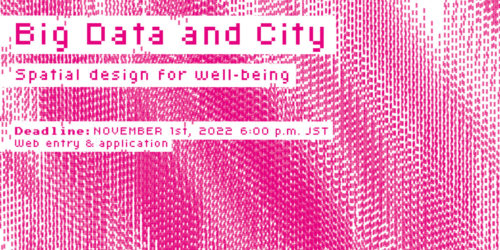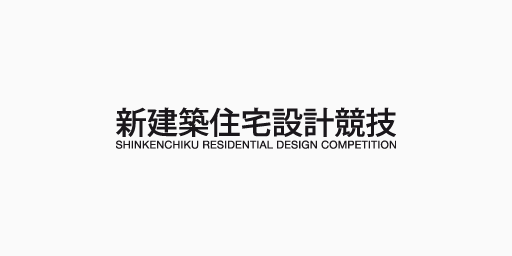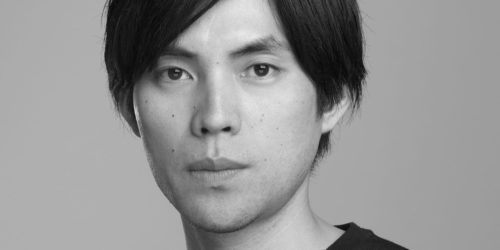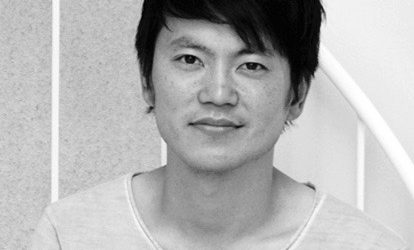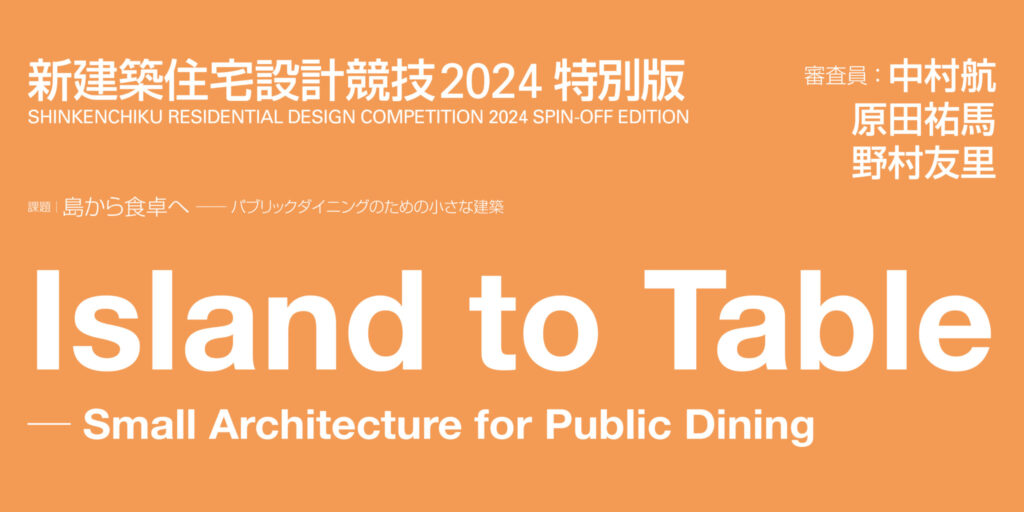Competition 2017 Ideas and Dimensions: Go Hasegawa
2017.10.02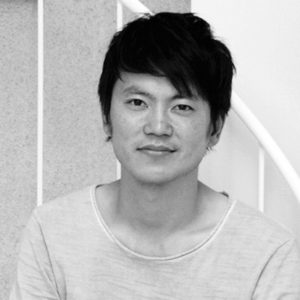
Go Hasegawa Jury Member
A house that updates a very common concept of “dimensions,” which is the theme of this competition.
It is probably one of the first words for a young child to learn and use “big/small.” The concept of “dimensions” is so common for the human being although it is quite ambiguous at the same time. Such ambiguity can be understood since the criteria for what is “big/small” vary according to the situation. Something “big” for a person can often be considered as something “small” for another. Even the human scale that is considered as “the absolute scale of measurement” cannot be so absolute when you closely observe the difference in, for example, bodies of Japanese and Westerners. As I mentioned in the competition assignment, the concept of “dimensions” deeply relies on a place (difference in regions and cultures), time (difference of eras), and person (difference in perspectives). It means that the concept of “dimensions” reflects cultural differences as well as social circumstances of the time. In other words, developing a house with a brand-new concept of “dimensions” can possibly make a difference in current cultural and social circumstances. That is what I expected to see in this competition.
While the theme “dimension” is common for everyone and it’s easy to develop an idea from that, I was still a bit anxious about how many entries we would receive until we saw the total of 1,081 registrations (614 domestic, 467 overseas) and 418 submissions from all over the world. It turned out to be an exceptionally international design competition with history. Reviewing all PDF files took much longer than I expected, partly because I was not accustomed to it, and also partly because it was very difficult to decide prize winners among a large number of excellent pieces.
Damjanović won the first prize with the proposal that focuses on and deals with cultural differences in “dimensions.” The house is on the border, and its elements are placed randomly. Sizes and shapes of these elements reflect various cultural differences. According to its descriptive text, a column, for example, can become a bench, a chapel, a well, or a shower stall as it changes in size. Drawn from the migrant crisis as a present-day social issue, this is a house that doesn’t solve such issues but naturally accept various cultural differences with its “various dimensions.” Diversifying “dimensions” can be a methodology to accept human diversity as it is. I found such perspectives of “various dimensions” very attractive. Moreover, its presentation was superbly effective by using a couple of drawings that represent the image and history of migrants in contrast. The only thing that I should be critical about this was the title “collage house” (is it an homage to Collage City by Colin Rowe?). It would have been much better if it could go beyond a mere collage and represent the world in the age of globalization as the proposal intends to show. Nevertheless, Damjanović surely deserves the first prize.
Shiihashi won the second prize with a challenging idea of a house addressing dimensions of a gender issue, which reflects the “social gender gap” becoming narrower and narrower in the current society. (Letting alone whether gender gap can be narrower to such an extent or not.) A space is divided by the center wall, creating two mirror image rooms; one for a male and the other for a female. The only place where the gender difference is obvious is on a bed, ironically placed in an asymmetrical manner. This really made me laugh. While many entrants tried very hard to manipulate physical dimensions such as height or size, Shiihashi’s proposal offers a unique and unexpected perspective of “dimensions,” the theme of this competition, and it can be highly evaluated that such perspective was neatly realized in the design of space. What disappointed me was that the image of its model being shot a little overexposed brought me an intense deja vu. I suppose there would have been a cleverer and more appropriate representation for this idea.
EQUAL HOUSE by Chang+Manthripragada stood out from those dealing with physical dimensions, and thus won the third prize. The idea is very simple, with the table, kitchen island, bathtub, and bed that are exactly identical in size. Different elements in the same dimensions visualize deviation in those supposedly identical spaces. This proposal captured the relativity of “dimensions” well among those eccentric ones that brought extreme dimensions into a house. Their simple and crisp presentations with only one sentence was also favorable. Roh+Kim+Park won another third prize by the proposal of a share house where not only humans but also animals in different sizes coexist. Although there were similar approaches that a house represented a broader ecosystem, density of this proposal was outstanding among them. The image of 21 kinds of different “dimensions” in a complete harmony created a great impact while it might have been better that dens of different animals were re-created into a brand-new house rather than presented them as a collage.
Ito received an honorable mention with a proposal of a house that the sound echoes equally in every room. While a tower-type house and a one-story house shown as its variations are too schematic, the way it represents “dimensions” is quite interesting. I would say that the idea could be developed further and it made me want to walk around in such a house and feel the sound. Montresor+Lando made a proposal that minimum elements were placed as a house in the great nature of California, and I had sympathy with their idea that scales of the human body and the nature were practically connected without using “dimensions of an architecture.” It would have been even more preferable if they could have integrated fragmented ideas into a larger image. Constructing elevation surfaces of a collective housing with large and curved balconies was a proposal by Yamaguchi. Its approach for reconstructing a residence from the perspective of “dimensions of a cluster” should be recognized even though the presentation was a little too descriptive and the drawing lacked some impacts. Hatakeyama’s proposal focused on the distance to the sky and it was presented by a ceiling with its thickness changed from extremely thin to extremely thick. It is a pleasant idea with an attempt to address the space by its quality where it is hard to grasp only by its visual perception, though the interesting point of the proposal seems to be replaced with the “weight” of overhead mass rather than its “dimensions.” Kawamoto’s proposal had a clear idea of the mixture of various “dimensions,” and its delicate drawing was quite impressive. However, I would call it “scaleless” rather than “no scale”, since trees are the metaphor for it. Another impressive drawing by Zhang showed a house that is only one-dimensional with the depth, and residents would live there along lines. The concept of one-dimensional house is very interesting, but I’d like to see the deeper meaning of what would happen by such a concept.
Lastly, looking back the process of reviewing all entries, I gave up to examine PDF files on iPad after I narrowed down the entries to the best fifty proposals. Instead, I decided to print them out although it was not an easy task to do at my office. The reason why I did it was that it became harder and harder for me to review them objectively with the PDF data on the screen, even though it could be scalable and I could examine as much detailed information as possible by spending time for the review. It may be just my issue, or I may eventually get used to it. This competition specified the “dimension” of submission data: A2 size (420×594 mm / 16.5×23.5 inches) in PDF format. I therefore imagined that entrants actually did print out their proposals to check the “dimension” at least once before they submitted them. When I arranged the printed out papers on the desk, I felt a strong response from them. Some proposals that I was not so attracted on iPad screen became to look outstanding, and vice versa. I was even surprised to see the result changed so dramatically.
An idea itself may be just information, but as soon as it obtains a specific “dimensions,” it starts to face to the real. Even a wonderful idea could be spoiled by wrong “dimensions.” The moment when “dimensions” are given to an idea could be when architecture is created.
